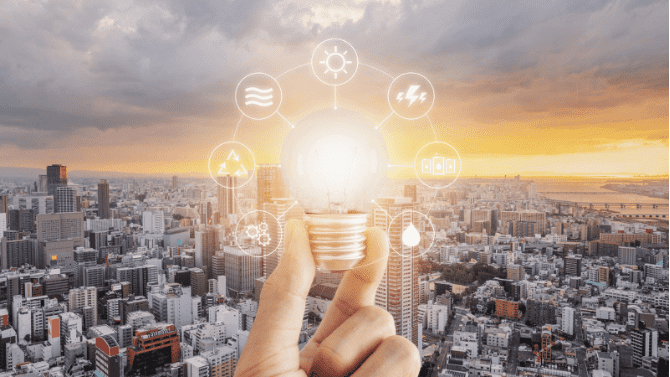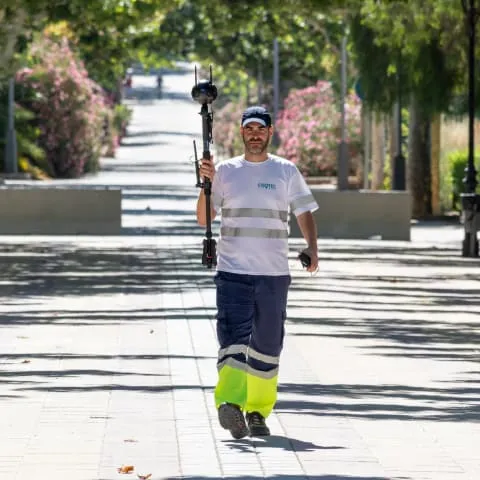
How do digital twins contribute to energy savings?
Digital twins are revolutionising the world. If you have been around here reading any of our last articles, you will have been able to see it. Not only is the use of digital twins for the improvement of smart cities a fact, but GIS and digital twins form the perfect tandem when it comes to efficient management of urban services.
So today, as you already know what digital twins are (if not, we encourage you to take a look), we want to go a step further and tell you how digital twins contribute to energy savings. Will you join us?
Need for energy savings
We need to save energy, all of us, from citizens to public administrations, including companies. It is a common duty that concerns society as a whole. Think about it, in a world increasingly demanding of energy resources, the need to save has become crucial and urgent. Are digital twins the tool to address the energy problem and the need to save, and also to contribute to sustainable development and combat climate change? The answer is yes.
Advantages of the use of digital twins technology for energy efficiency
Yes, to talk about the need to save energy is to talk about technology that promotes energy efficiency.
Yes, we have talked in the past about how the urban data inventory favours the management and maintenance of resources, but the advances that digital twins are achieving in this area are not negligible.
Digital twins are high-tech tools that enable energy optimisation and savings, allowing companies to save costs, reduce their carbon emissions and improve their performance. They can be used to optimise energy efficiency by monitoring a company’s energy usage in real time.
The benefits? Although we have already mentioned some of them in the previous paragraph, digital twins are so intelligent that they can identify and solve problems before they occur, and that, whether you like it or not, is a substantial economic saving, isn’t it? And we can go on, because they can also be used to monitor compliance with energy regulatory requirements, a legal obligation that companies and public administrations must control to the millimetre.
Increased use of digital twins
Do you now understand the boom in the use of digital twins? Not least when they are proving that they can help eliminate energy waste by identifying inefficient equipment and systems, or by tracking changes in energy consumption as new energy saving measures are implemented.
Application of digital twins in energy savings
As we have said, in recent years, the use of this technology has grown exponentially, and it is no wonder when it allows users to measure, manage and optimise energy to improve efficiency and optimise consumption.
But what are the specific applications and uses of digital twins? For example, they can be integrated into digital energy metering devices, to measure the energy consumption of devices connected to the grid, and then collect, analyse and process them to obtain accurate and quality information on energy use.
They also improve grid security, through the use of grid monitoring software to detect and prevent grid problems, which helps to avoid unexpected power outages or breakdowns.
And that’s not all, because we must also think about the more everyday uses that we, as users, can benefit from. Wouldn’t you like digital twins to help you better manage your energy consumption? Yes, wouldn’t you? This is possible thanks to applications that allow us to see our consumption data, to be able to make effective decisions about energy use and to learn and put into practice tips to save and reduce costs on the bill.
Areas of the energy sector where they are used
And indeed, digital twins are an increasingly important tool in the energy industry. So much so that they are increasingly used in a wide variety of areas in the energy sector, such as oil and gas production, well operation, energy distribution, power plant management, safety monitoring and equipment maintenance. In short, an effective solution that offers the industry a way to obtain, store and analyse accurate and quality information.
Energy-saving projects in which Fisotec is developing digital twins
And we end this article by highlighting some of the projects in which Fisotec is immersed, because not only do we continue to make progress in artificial vision or in the efficient management of urban services thanks to indiva SaaS. Our commitment to digital twins is taking us to different cities and municipalities in Spain, such as DoñinosTown Council in Salamanca. At the building level, we are working on the generation of digital models for the proposal of solutions that favour energy savings in buildings, for which we have generated a complete digital BIM model.
